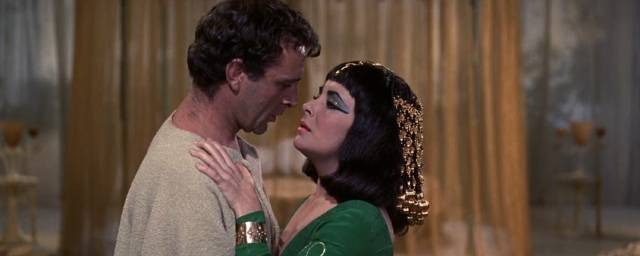Discover the many filming problems of “Cleopatra” (1963) and its colossal budget, which took ten years to be reimbursed!
How can a film take ten years to pay for itself? Twentieth Century Fox paid the price by producing Cleopatra in the early 1960s.
The production was entrusted to Rouben Mamoulian (Doctor Jekyll and Mr. Hyde, Queen Christine), for filming on British soil scheduled for the fall of 1960.
Elizabeth Taylor is hired for the title role and demands that the film be shot with wide film, a 70 mm in the unique Todd-Ao format, invented by her late husband Mike Todd. She gets a salary of $1.25 million for 16 weeks, rising to $500,000 a week after that, plus 10% of the takings. She will earn a total of 70.4 million dollars.
Twentieth Century Fox
Production is a nightmare. London does not provide the weather necessary to represent Egypt, and Elizabeth Taylor has serious lung problems. Launched on September 28, 1960, filming was interrupted on November 18. Barely ten minutes have been boxed, and the film and its preparation (sets, costumes) have already cost 70 million dollars!

Twentieth Century Fox
If you haven’t seen the movie, know that this life-size Sphinx is moving forward!
Rouben Mamoulian resigned, and on January 25, 1961, Fox hired Joseph L. Mankiewicz in his place. Taylor is treated, the shooting is deported to Italy, and the pharaonic sets are made there again. In the meantime, the cameras are no longer rolling, which allows Mankiewicz to review the script, but causes the departure of actors Peter Finch and Stephen Boyd, replaced by Rex Harrison and Richard Burton.
It doesn’t work out
The delays accumulate because – twist of fate – the weather is bad also in Italy, posing problems of lighting. The expenses follow one another and most of the battle sequences are deleted or amputated, for lack of budget. When principal photography finally wraps, the director has a cut of just under six hours, which needs to be split into two films.

Twentieth Century Fox
Richard Burton and Elizabeth Taylor
But Fox director Darryl F. Zanuck finally refuses and wants only one. Mankiewicz quits, and the producer releases his edit, a version of about 4 hours. According to legend, 49 pages of reshoots are then ordered in order to make sense of this cut version.
As expensive as Avatar 2!
The film’s final budget at the time was $44 million, a colossal sum since today it would be $428.08 million, equivalent to the cost of Avatar: The Way of the Water. , estimated between 350 and 400 million.

Twentieth Century Fox
Mankiewicz was rehired to shoot Anthony’s impressive charge scene in the Almeria desert, but would never recognize the film as his own. Elizabeth Taylor will talk about a feature film finale “vulgar”, not rendering the complexity of the characters present according to her in the original version.
A success… but 10 years of debt
The film was a great success, the No. 1 box office of 1963, also thanks to the sulphurous couple Burton-Taylor, who then occupied the tabloids. Its crazy costs, however, will keep the film in the red for years.

Twentieth Century Fox
In 1973, when the film was finally reimbursed, Twentieth Century Fox chose not to shout it from the rooftops, in order to finally be able to make a profit and not have to pay money to the actors who were to receive an incentive on the receipts.
